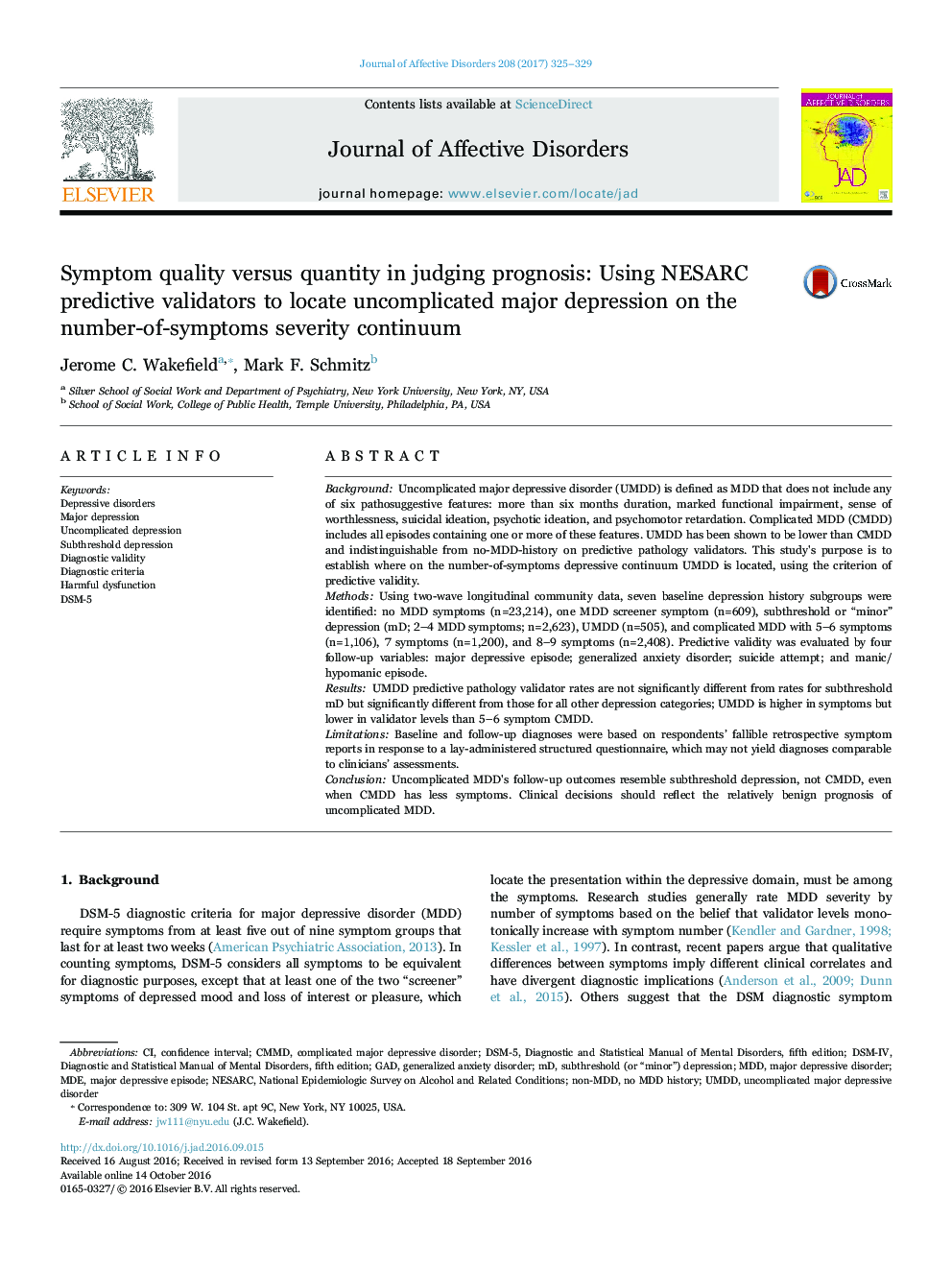| کد مقاله | کد نشریه | سال انتشار | مقاله انگلیسی | نسخه تمام متن |
|---|---|---|---|---|
| 5722094 | 1608117 | 2017 | 5 صفحه PDF | دانلود رایگان |

- Uncomplicated MDD (UMDD) by definition excludes six pathology-suggestive features.
- Pathology validators were 3-year follow-up rates of MDE, GAD, mania, suicidality.
- UMDD resembles subthreshold depression, not other MDD, in validator rates.
- A symptom count is inadequate for assessing MDD predictive-validator severity.
- Uncomplicated MDD's relatively benign prognosis should impact treatment decisions.
BackgroundUncomplicated major depressive disorder (UMDD) is defined as MDD that does not include any of six pathosuggestive features: more than six months duration, marked functional impairment, sense of worthlessness, suicidal ideation, psychotic ideation, and psychomotor retardation. Complicated MDD (CMDD) includes all episodes containing one or more of these features. UMDD has been shown to be lower than CMDD and indistinguishable from no-MDD-history on predictive pathology validators. This study's purpose is to establish where on the number-of-symptoms depressive continuum UMDD is located, using the criterion of predictive validity.MethodsUsing two-wave longitudinal community data, seven baseline depression history subgroups were identified: no MDD symptoms (n=23,214), one MDD screener symptom (n=609), subthreshold or “minor” depression (mD; 2-4 MDD symptoms; n=2,623), UMDD (n=505), and complicated MDD with 5-6 symptoms (n=1,106), 7 symptoms (n=1,200), and 8-9 symptoms (n=2,408). Predictive validity was evaluated by four follow-up variables: major depressive episode; generalized anxiety disorder; suicide attempt; and manic/hypomanic episode.ResultsUMDD predictive pathology validator rates are not significantly different from rates for subthreshold mD but significantly different from those for all other depression categories; UMDD is higher in symptoms but lower in validator levels than 5-6 symptom CMDD.LimitationsBaseline and follow-up diagnoses were based on respondents' fallible retrospective symptom reports in response to a lay-administered structured questionnaire, which may not yield diagnoses comparable to clinicians' assessments.ConclusionUncomplicated MDD's follow-up outcomes resemble subthreshold depression, not CMDD, even when CMDD has less symptoms. Clinical decisions should reflect the relatively benign prognosis of uncomplicated MDD.
Journal: Journal of Affective Disorders - Volume 208, 15 January 2017, Pages 325-329